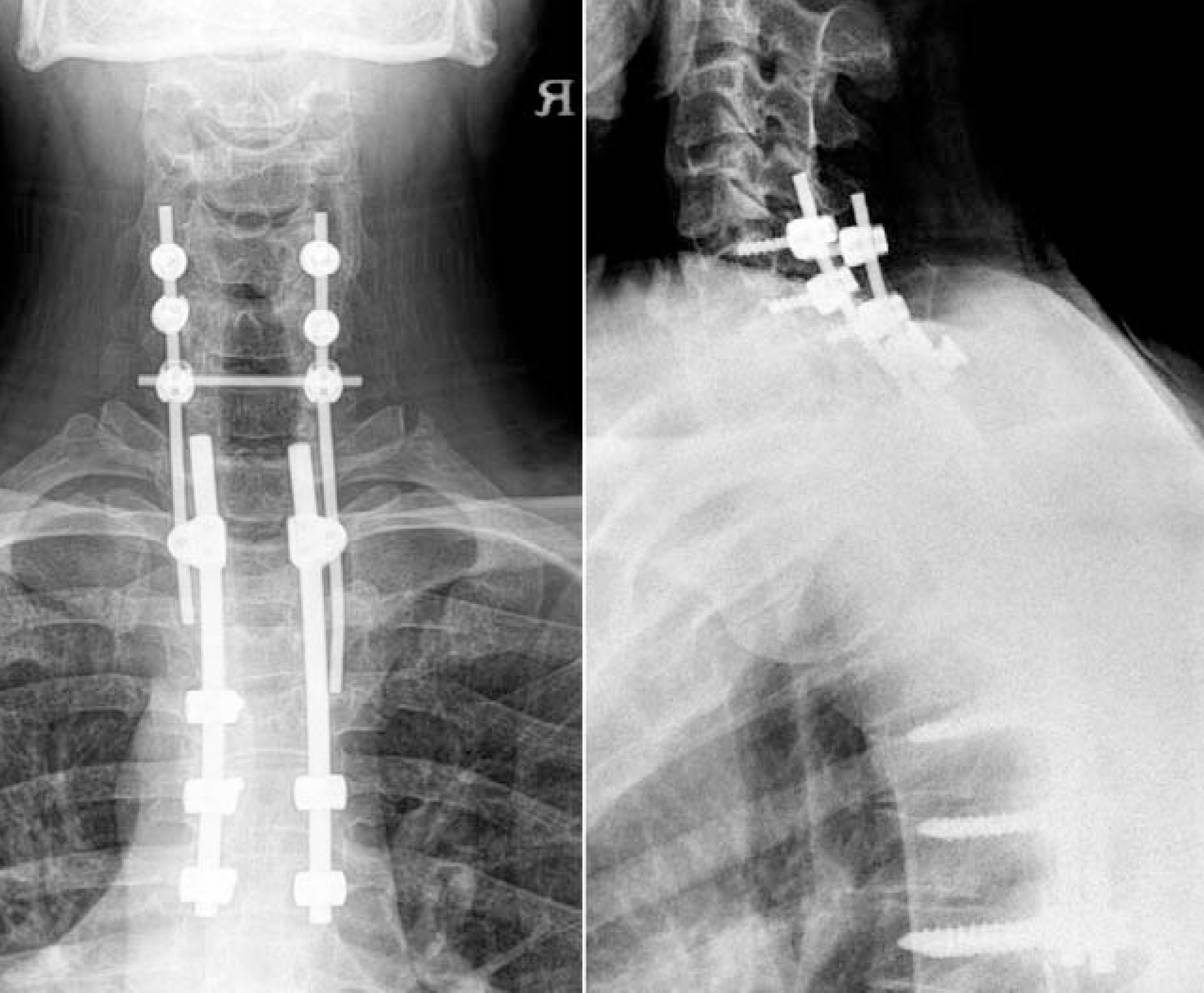J Korean Soc Spine Surg.
2006 Sep;13(3):215-218. 10.4184/jkss.2006.13.3.215.
Flexion-distraction Injury in Cervico-thoracic Junction: A Case Report
- Affiliations
-
- 1Department of Orthopaedic Surgery, Hanyang University College of Medicine, Guri, Korea. kcpark@hanyang.ac.kr
- KMID: 2209645
- DOI: http://doi.org/10.4184/jkss.2006.13.3.215
Abstract
- Injuries at the cervico-thoracic junction can be difficult to diagnose (with an incidence as high as 9% of all spinal injuries) and to stabilize, because of anatomic complexities. We report a case with that was treated with a lateral mass screw and transpedicular screw-rod fixation for a flexion-distraction injury at the cervico-thoracic junction and we present a review of the literature.
MeSH Terms
Figure
Reference
-
01). An HS., Gordin R., Renner K. Anatomic considerations for plate-screw fixation of the cervical spine. Spine. 1991. 16(10 Suppl):S548–S551.
Article02). Sapkas G., Papadakis S., Katonis P., Roidis N., Kontakis G. Operative treatment of unstable injuries of the cervicothoracic junction. Eur Spine J. 1999. 8:279–283.
Article03). Stanescu S., Ebraheim NA., Yeasting R., Bailey AS., Jackson WT. Morphometric evaluation of the cervicothoracic junction. Practical considerations for posterior fixation of the spine. Spine. 1994. 19:2082–2088.04). Bohlman HH., Freehafer A., Dejak J. The results of treatment of acute injuries of the upper thoracic spine with paralysis. J Bone Joint Surg Am. 1985. 67:360–369.
Article05). Evans DK. Dislocations at the cervicothoracic junction. J Bone Joint Surg Br. 1983. 65:124–127.
Article06). Amin A., Saifuddin A. Fractures and dislocations of the cervicothoracic junction. J spinal Disord Tech. 2005. 18:499–505.
Article07). Kreshak JL., Kim DH., Lindsey DP., Kam AC., Panjabi MM., Yerby SA. Posterior stabilization at the cervicotho- racic junction: a biomechanical study. Spine. 2002. 27:2763–2770.08). Deen HG., Birch BD., Wharen RE., Reimer R. Lateral mass screw-rod fixation of the cervical spine: a prospective clinical series with 1-year follow-up. Spine J. 2003. 3:489–495.
Article09). Sekhon LH. Posterior cervical lateral mass screw fixation: analysis of 1026 consecutive screws in 143 patients. J Spinal Disord Tech. 2005. 18:297–303.10). Rhee JM., Kraiwattanapong C., Hutton WC. A compari-son of pedicle and lateral mass screw construct stiffnesses at the cervicothoracic junction: a biomechanical study. Spine. 2005. 30:E636–E640.
- Full Text Links
- Actions
-
Cited
- CITED
-
- Close
- Share
- Similar articles
-
- Supraclavicular Approach to a Lesion in the Cervico-Thoracic Junction
- Short Segment Fixation of Flexion-Distraction Injuries in Thoracolumbar Spines
- The Report of 20 Cases of Craniovertebral Junction Abnormalities
- Sternum-Splitting Approach for Anterior Space-Taking Lesions in the Upper Thoracic Lesion
- Delayed-Onset Leg Weakness Caused by Posterior Migration of a Herniated Disc to the Thecal Sac Mimicking Epidural Hematoma in a Flexion-Distraction Injury of the Lumbar Spine: A Case Report




